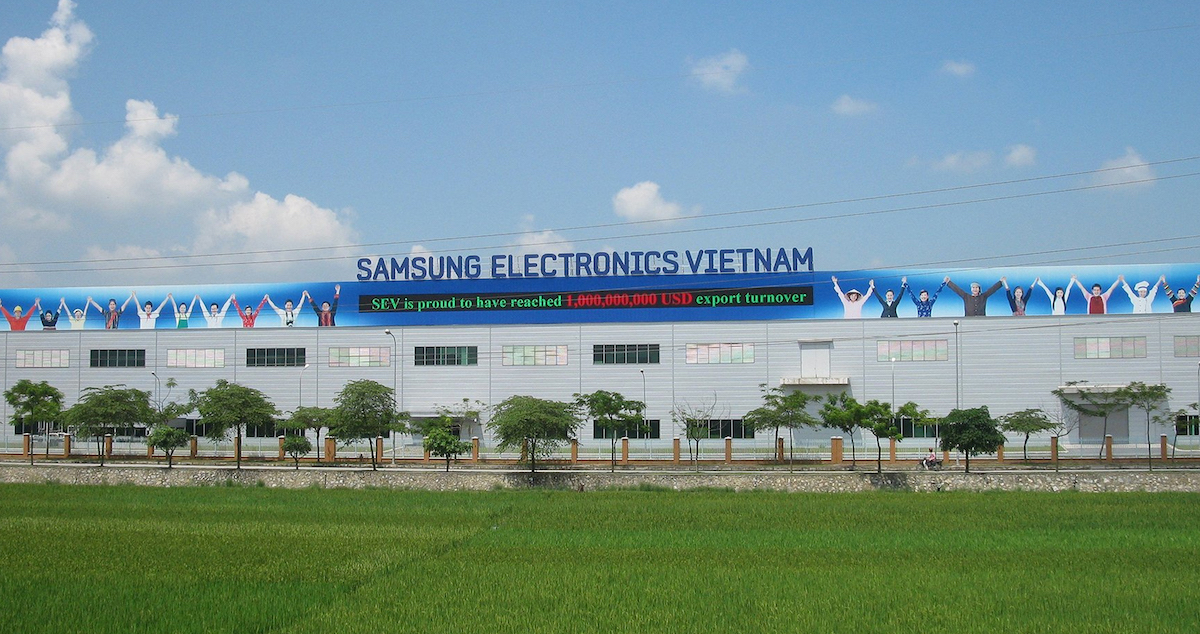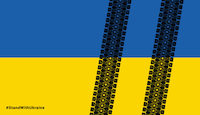
Friend-shoring: Moving Product Manufacturing Closer To The Markets
October 30, 2023 by guest author, Florian Rotberg
The annual Digital Signage Yearbook produced by invidis, with contributions from Sixteen:Nine, was released this summer as a free download – and we’re now running some of the articles from that yearbook here.
First up, a piece written by invidis managing director Florian Rotberg about the recent trend of friend-shoring – companies shifting production and logistics facilities away from China to ease supply chain issues.
China is the factory of the world when it comes to display production. But there is a shift: More and more production facilities in other regions – like Vietnam, the US or Europe.
If the pandemic has demonstrated one thing, then it is that global manufacturing and logistics are not as resilient as previously believed: closed ports and borders, the Suez Canal obstruction by the Ever Given or just recently the blockage of the China-Europe rail link due to sanctions against Russia. Furthermore, the writing is on the wall for future conflicts, e.g. the rising political and economic tensions between the US and China. But what is the impact for the digital signage industry?
As the vast majority of all visual solution products – displays, LED and projectors – are manufactured in Asia, the industry is evaluating options and rapidly shifting manufacturing and assembly closer to markets. Final assembly is partly already located inside the EU, USMCA – USA, Canada and Mexico, formerly known as NAFTA – and ASEAN, mainly driven by custom benefits. But basically all components – especially display panels, LEDs and high performance CPUs – are manufactured in and imported from Asia.
Vietnam is the new China
Display manufacturing is and will be centered in Greater China – not only because BOE, China Star Optoelectronics (both China) and AU Optronics (Taiwan) dominate global LCD panel manufacturing. Heavy subsidies by the Chinese government have made competitiveness of LCD manufacturing outside of the PRC rarely economically. Taiwan is one of the rare exceptions, as the traditional home of LCD manufacturing. Japanese and Korean display manufacturers moved most display production first to China and later transferred the business to Chinese partners.
New manufacturing plants, like Samsung’s MicroLED facility, are often located in Vietnam. The ASEAN member offers cheaper labor than China but borders directly to China for easy logistics of input materials.
Reducing dependance
Final assembly plants inside the big trading blocs are expanded for higher vertical integration and in-house manufacturing. Most visible is this development in DV-LED manufacturing, as the geographical manufacturing move coincides with a technology shift from SMD to COB.
Building a modern LED fab costs roughly 1 billion Euro, compared to 10 billion Euro for a latest generation display plant. More and more premium brands are therefore setting up shops inside the big trading blocs. In Europe, Samsung manufactures his MicroLED solutions from The Wall brand in Slovakia, Leyard manufactures the latest LED solutions in Europe for local customers as well as for export to USMCA.
PPDS with its Philip products and Sharp/NEC are both controlled by large Taiwan-based contract manufacturers, TPV and Foxconn respectively. They will undoubtedly benefit from their parents’ global manufacturing networks. But for now, both rely on main manufacturing sites in China.
The two large Korean manufacturers are strategically in a more challenging situation. LG Displays and Samsung Displays – the display manufacturing subsidiaries of LG Electronics and Samsung Electronics – have exited, or are in the process of exiting, the LCD-display manufacturing business. Samsung sold its last fab in 2022, while LG is still manufacturing LCD, but focusing in the future mainly on OLED. The vast majority of LCD panels are now manufactured by BOE, China Star Optoelectronic and AU Optronics.
From Scala-CMS to MicroLED
Most prominent is Stratacache’s investment in its own MicroLED fab in Oregon on the US Westcoast. CEO Chris Riegel has always had a sixth sense for opportunities. But the acquisition of a memory chip plant in the US that was vacant for ten years is undoubtedly his biggest endeavor yet. Core of memory chip and LED manufacturing is the same – a large clean room. The pandemic impacted the delivery of manufacturing machines and tools and therefore delayed Riegel’s plans of starting production end of 2022. According to the bustling CEO, the company is set to start manufacturing towards the end of 2023.
Interestingly, Stratacache plans to manufacture MicroLED not only for digital signage purposes but also for automotive and other industry use-cases. It will be interesting to see if an integrator can move up the value-chain becoming a serious hardware manufacturer. The gamble seems high – but if anyone in the industry is able to do, then it is Chris Riegel and his team.
Free Download
 The invidis yearbook, done for many years by the German language consultancy and publishing firm, is a fantastic resource. It long focused on the EU market, but in the last two years has had a second version with North American content generated by Sixteen:Nine. The very good news is that the PDF is a free download, and all invidis asks is your email, so they have some sense of who all is reading it. Pretty fair trade.
The invidis yearbook, done for many years by the German language consultancy and publishing firm, is a fantastic resource. It long focused on the EU market, but in the last two years has had a second version with North American content generated by Sixteen:Nine. The very good news is that the PDF is a free download, and all invidis asks is your email, so they have some sense of who all is reading it. Pretty fair trade.




Leave a comment